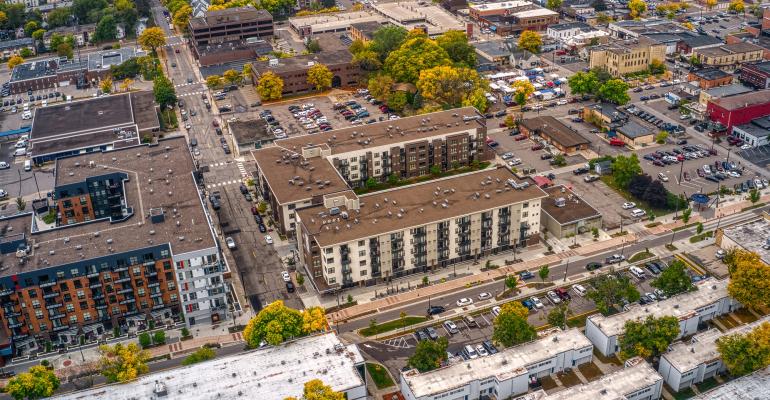The continuing pandemic has accelerated several existing trends in migration patterns throughout the country.
Factors such as a new ability to work remotely and an increased focus on health and overall wellness are still driving moving decisions for many people. This has naturally opened up new opportunities for real estate investment in emerging markets, while creating hesitancy around others.
So which assets in these emerging markets are attracting the most investor interest, and how are investors securing properties presenting value as these markets heat up?
Drawing from experience identifying emerging markets and the types of apartment assets that are seeing high demand and potential, we discuss some current trends and strategies that investors and financial advisors should be aware of when considering multifamily investment below.
Assets in lower-density submarkets that offer convenience and quality of life.
The pandemic sparked significant migration out of highly populated areas, including New York City and Chicago, and into less densified ones, such as cities and suburbs throughout states including North Carolina, Idaho and Florida.
For instance, while our primary area of focus for several years has been on select California and Oregon markets, we actually expanded into Colorado and the Southeast during the pandemic.
Aside from a lower cost of living, these areas offer an appealing lifestyle and essentially more space to breathe, which has been a high priority as people seek to avoid illness and improve their physical and mental well-being.
Naturally, demand for multifamily units in in-migration markets is rising as people increasingly relocate to these places. Smart investors are focusing on apartment communities in lower density submarkets just outside the larger cities and urban cores of these emerging markets now, before pricing catches up with demand levels.
When identifying these assets, is important to look for communities that are within a reasonable commuting distance of employment hubs and major metros. Regions undergoing significant investment in infrastructure are opening up lucrative opportunities to acquire, develop or redevelop multifamily near transportation corridors.
Investors who look for less-traveled submarkets throughout the country that are experiencing strong demand are more likely to find multifamily investment opportunities with less competition driving up prices.
Communities with the features that align with reasons for migration.
Many in-bound residents fleeing overpriced gateway markets and urban cores are seeking the extra space and convenient features that they could not afford in their previous cities in these emerging markets.
While some are looking for home ownership or single-family rentals, many residents of all demographics—young professionals, downsizing boomers and even growing families—are also drawn to high-quality apartments for the top-notch features and sense of community.
These renters are looking for properties that offer modern amenities, including smart home technology, full on-site gyms, package lockers, roof terraces, patio decks and modern finishes.
Because many companies still operate on a fully remote or hybrid basis, residents are looking for places where they can both unwind and stay productive. Apartments with spacious floorplans that can accommodate an at-home office are in high demand, as are communities that offer a variety of common areas that allow for a change of scene to either relax, socialize or work.
There are many strong opportunities to invest in these types of properties throughout the country. That said, those looking to invest in class-A new construction that exemplifies these luxury lifestyles and amenities in emerging markets will want to stay on the pulse of the development pipeline, and ensure they avoid submarkets that are becoming overheated.
Properties where there is room for improvement.
Older apartment communities where upgrades can be made are one of the best investment categories for multifamily. Vintage, ‘diamond-in-the-rough’ class-B and -C apartment communities can offer opportunity for both organic growth through increased demand in the market, as well as significant additional upside through property-level enhancements.
For example, we recently acquired a 288-unit multifamily community in Fayetteville, N.C. in an off-market transaction. We were successful in securing this asset off market in a new region—where some of the country’s highest in-migration is occurring—partly because of our ability to leverage existing relationships to find pockets of opportunities in the market.
Investment managers well-versed in the multifamily industry and value-add opportunities are also identifying assets with unique qualities that can add significant upside.
For instance, our recent acquisition includes room for expansion via a vacant land parcel totaling over 42 acres. We’re evaluating the site for possible development of resident self-storage, an increasingly in-demand amenity, and an additional building of primarily one-bedroom units.
There is a considerable amount of competition for these types of multifamily assets in particular. That said, investment managers that are experienced, well-capitalized and connected are best positioned to secure and execute these deals, even within markets new to them.
With the pandemic exacerbating migration into emerging markets, multifamily investors are applying both tried-and-true and new strategies for investment in these regions.
By focusing on lower-density markets that are growing in popularity, looking for pockets of opportunity within those markets, staying on the pulse of resident demands to stay competitive for the long term and seeking properties where improvements can be made, multifamily investors can position themselves for success in these emerging markets.
Max Sharkansky serves as managing partner at Trion Properties, a private equity investment firm that primarily acquires value-add real estate properties with an emphasis on multifamily. He can be reached at [email protected].

